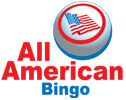A Brief Lesson in Bingo History
Bingo History goes back as early as the 1500s. The game we all know and love originated from various versions of Lotto played in Italy, France and Germany.
Bingo, as we now call it, was brought to the US by an unidentified carnival worker who ran across a game called Lotto while traveling with a carnival in Germany. The man immediately recognized it as a good tent or carnival game. After making a few changes in its play he changed the name to Beano, so named because the players would place a bean on the num- ber if their card had the number called by the pitchman (or caller). The game of Beano was then discovered in 1929, by a New York toy salesman named Edwin Lowe who stopped at a carnival in Georgia during his business travels. Lowe noticed the players were practically ad- dicted to the game and brought the concept back home to New York.
Lowe started hosting the game in his apartment for friends. Soon they were playing Beano with the same gusto as those Lowe saw at the carnival. One particular player kept getting more and more excited as she got closer to winning. Finally, her last number was called! She jumped up, became tongue-tied, and instead of shouting “Beano,” stuttered “B-B-B-BINGO!”
“I cannot describe the strange sense of elation which that girl’s cry brought to me,” Lowe said. “All I could think of was that I was going to come out with this game, and it was going to be called Bingo!”
Bingo is now played in churches, veterans and charitable organizations, and casinos across the country and into other parts of the world.
Click HereCLICK TO DOWNLOAD FLYER: “A Brief Lesson in Bingo History“
Latest Bingo News
- 06 Apr 2016Black Light Bash is coming to a town near you!!Check our Events Calendar for more information or check out our Facebook page! https://www.facebook.com/blacklightbashaab/ ...
Contact Details for Home Office
- 12947A Gravois Road, Sunset Hills, MO 63127
- 800-752-4675
- 314-991-1214
- 314-991-1182
- Find us on map


